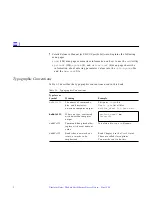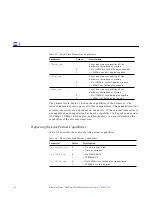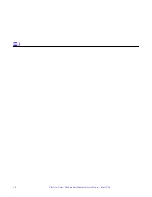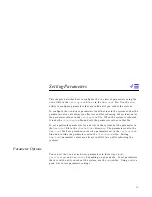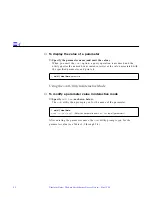
The hme Device Driver
7
2
•
Selects the highest common denominator mode of operation based on the
following priorities:
•
100 BASE-T4
•
100 Mbps, full-duplex
•
100 Mbps, half-duplex
•
10 Mbps, full-duplex
•
10 Mbps, half-duplex
The link partner is the networking device (system, Ethernet hub, or Ethernet
switch) at the other end of the link or cable. If the
SUNW,hme
device is
connected to a remote system or interface that is not capable of auto-
negotiation, the system automatically selects the correct speed and half-duplex
mode.
If adapters or systems are connected to a link partner and the auto-negotiation
protocol fails to operate successfully, you can configure the device so it does
not use this protocol. This forces the driver to set up the link in the mode and
speed that you choose instead of using the auto-negotiation protocol.
Internal Transceiver
The internal transceiver is a feature supported by the driver and is capable of
all the operating speeds and modes (except the 100BASE-T4 mode) listed in the
section “Operating Speeds and Modes” on page 6. When the internal
transceiver is used, the default is auto-negotation by the
hme
driver, which
automatically selects the speed and mode of the link. The internal transceiver
performs auto-negotiation with the remote end of the link (link partner) to
select a common mode of operation.
The internal transceiver also supports a forced mode of operation. This
is where the user selects the speed and mode using the
ndd
utility, the
/etc/system
file, or the
hme.conf
file. The
ndd
utility makes calls to
the
hme
driver to choose the speed and mode.
External Transceiver
When an external transceiver (not present on the SunSwift SBus Adapter) is
connected to the MII interface, the driver selects the external transceiver for
networking operations.










